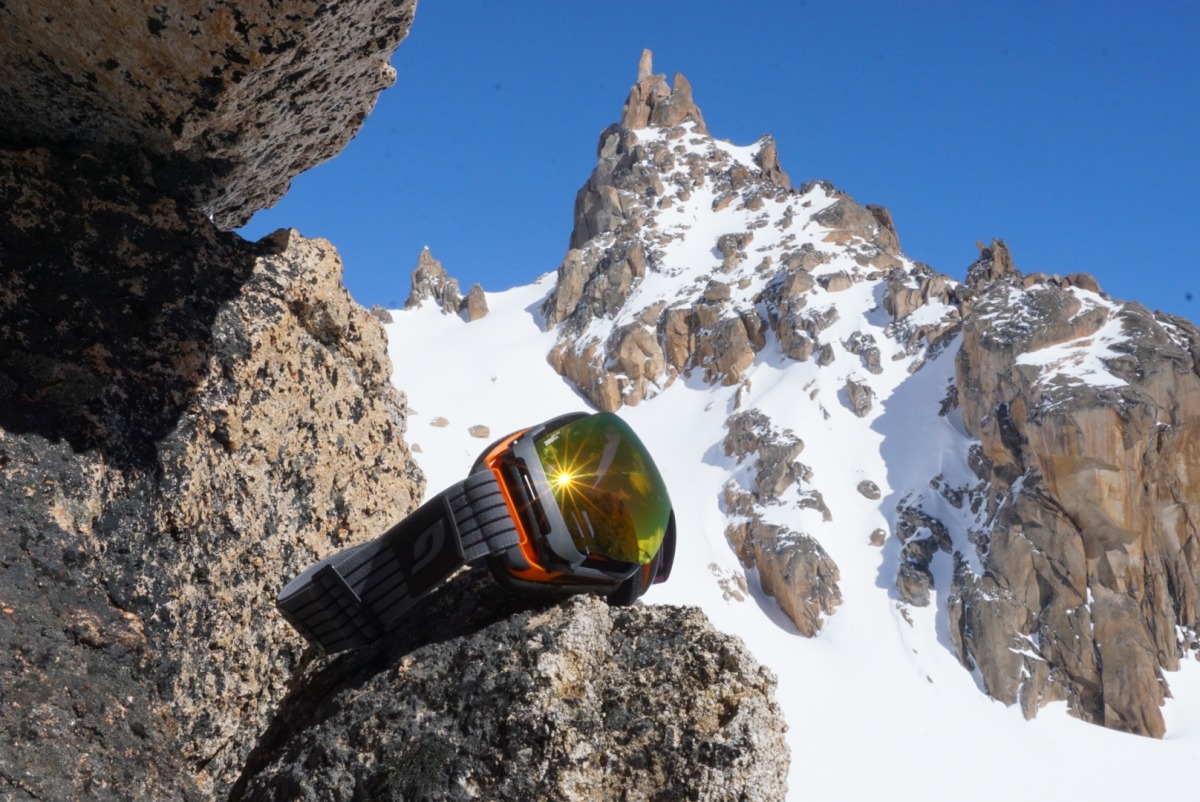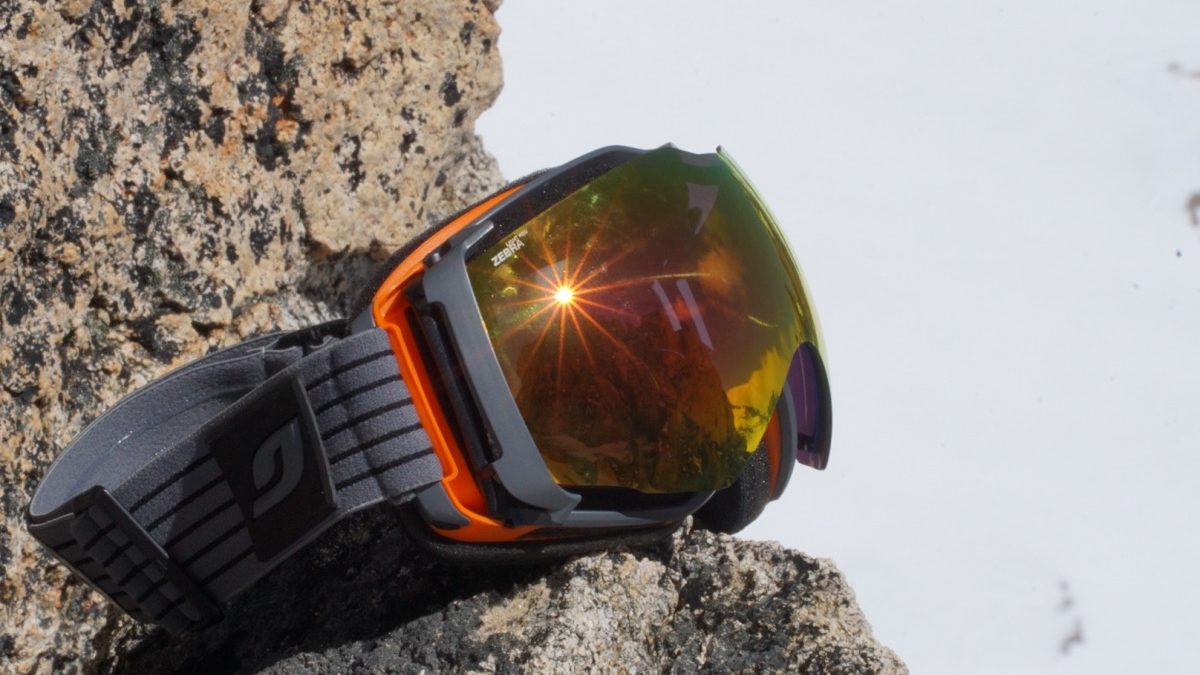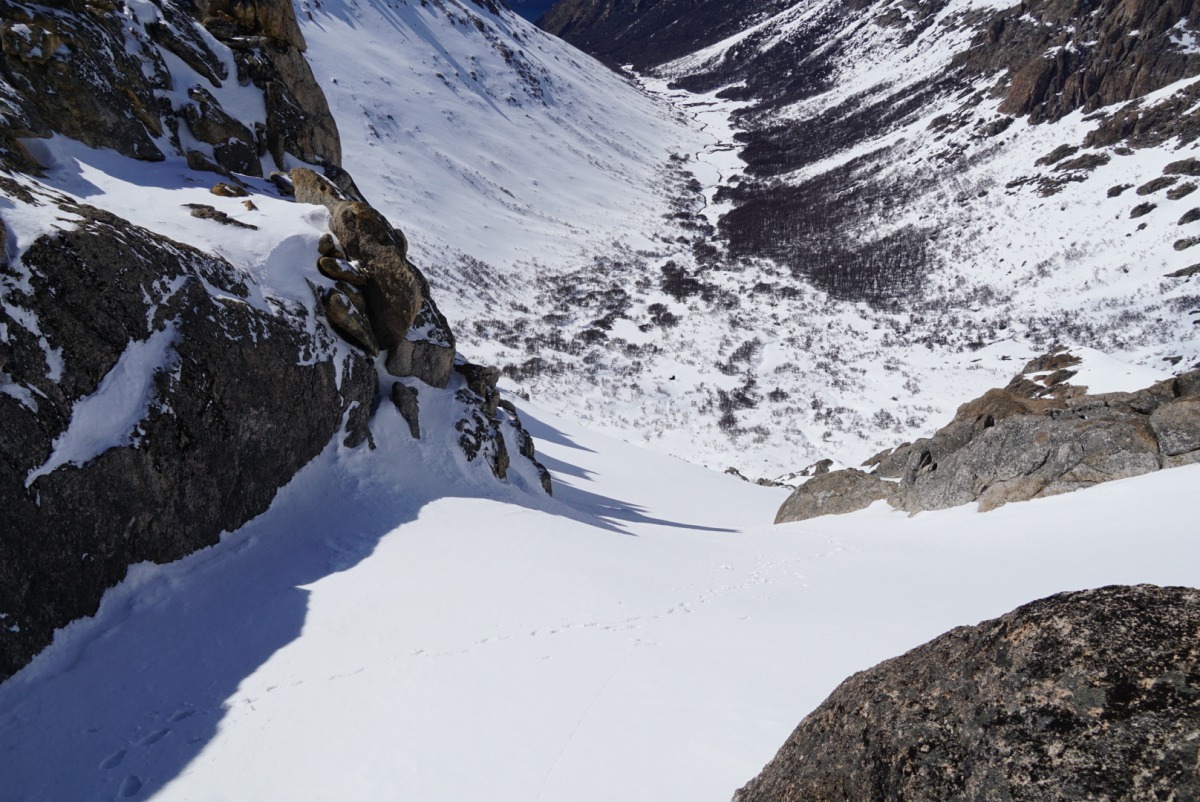
In sun, fog, blizzard and everything in between, the Julbo Aerospace Goggles proved a useful and versatile companion in the Andes.
Lost sunglasses and botched plans = perfect testing conditions
Before my ski trip in the Andes last fall, I picked up a pair of Julbo Aerospace Goggles, a classic comfortable goggle with the bold claim that they can be worn in clouds and sun and uphill and downhill. I was skeptical, to say the least, but after a pretty impressive testing situation (read on) Julbo delivered on their claim and I now have a “do-it-all” goggle. I knew I had a good chance to get all sorts of conditions in Patagonia in early October, but I didn’t expect that I would actually need them quite so much as I did. Blizzard test, cold sun test, hot sun test, fog test, wind test, you name it. Over four days of skiing I wore nothing on my eyes except for the Julbos. That’s ‘cause I lost my sunglasses on my way down there.
A boneheaded mistake can be a gear reviewer’s blessing in disguise
You see, as I was waiting for a connection in Denver, I stopped in for a frothy beverage at the obscure New Belgium restaurant in Terminal B. Twenty hours later I woke up with drool crusted to my cheek. While taxiing on the tarmac in Buenos Aires, it occurred to me that I left my trusty sunglasses right next to my empty pint glass in DIA. Rats! Out loud, I murmured: well now I’ll really test those goggles, to which the confused passenger to my right replied “desculpe?”
I know many of you are thinking: why didn’t you just buy a new pair of cheap sunglasses? Good question with two answers: 1) Because cheap sunglasses in Argentina are like…really bad. Halfway decent sunglasses are actually quite expensive 2) I had the Julbos and figured I may as well take the “do-it-all” challenge.
Normally, I would not consider actually wearing goggles on the uphill. We’ve all been there in the “goggle greenhouse” hiking up a short uphill at a resort or slogging out of a gully, post descent, in the sun. Sweat builds up around the goggle foam, I put them on my head or helmet…then it’s all over. I personally have never worn a pair of goggles that might prevent the goggle greenhouse. So wearing the ultra-breathable Julbos one hundred percent of my time on skis would certainly be a good way to test the limits.
Backcountry skiers are always looking to marry two adjectives that don’t necessarily get along: “Lightweight” and “durable”. One way to achieve this is by removing excess gear from our pack while keeping only one well-made item. Leaving behind extra lenses and sunglasses would be an excellent start to shaving weight if the goggles inspire enough confidence. Durability is a hard thing to test in a short amount of time, but the Julbos don’t give me any reason to doubt durability, with the caveat that a crash with the “superflow” system open could break the lens mounts. With previous goggles I’ve owned, I usually bring both dark and light lenses since our Colorado sun can be extremely harsh (dark lenses please) but when that light is flat, things can get dangerous quickly. So Julbo’s photochromatic lens is certainly appealing and as you’ll read below, it got dark enough in the sun and light enough in the fog.
Let’s talk about plans for a minute.
My plan was to climb and descend a couple of volcanoes near Bariloche, AR and Osorno, CH with a friend from Chile. My plan was also that Mother Nature would deliver perfect conditions for my intended skiing. Well, I was on the tail end of a full year of traveling with my wife and son and if there’s something I’ve learned about plans in 2019 (and let’s not get started about 2020) it’s that plans can get smashed pretty fast and you better have a plan B, or better yet, a damn good knack for adapting to reality. Reality in this case was a big Antarctic storm that had her own volcano objectives planned. Which brings me back to the Julbos.
After plans B, C, and D (no joke), fell through, I found myself skinning up Catedral ski area in a classic Patagonian blizzard with the Julbos. Blizzard test: check! I opened up the “superflow” system for all around air movement. I took the long traverse over into the resort’s immense bowls that were closed for the season. A day lapping mellow bowls completely solo with two feet of fresh powder until sunset, is a day I will never forget. Speaking to the goggles, I went up and down for hours with clouds, snow, and sun passing me by like I was in a timelapse video. Cold sun test, hot sun test, fog test, wind test: check, check, check aannnnnnd check! Let’s talk about the technology that allows these beauties to be worn on the uphill:
Airflow: The frames have a well thought-out ventilation design built into the frame. But you and I know that’s not gonna be enough when your sweatin’ up a skintrack.
Superflow system: This is where the magic is. With or without gloves, you can pull the lense away from the frame about ? of an inch, allowing for full air circulation all around. It extends and rests on four pivoting arms that hold the lens in place while in the “open” position. I was able to operate this system with both thin gloves and thick mittens.
Anti-fog coating: On the lens.

Sunny and warm means open superflow mode. Julbo supplies an attachable plastic cap that keeps overhead sun from entering. I prefer to keep my ball cap on for max sun protection.
I still had a concern that Julbo’s “Dual Soft Foam”, the part which rests against my face, would get wet and sweaty as I worked uphill. I can’t say it feels any different than any other quality goggle I’ve worn. But as I headed uphill in the spring sun, I was pleasantly surprised to have a relatively dry face. I should add that I first made sure to strip down to the right shirt layer and open up the vents in my favorite North Face pants that I wear on every tour and reviewed in 2017.
The following day, I skinned up the resort again (after a luxurious ride in the gondola to mid-mountain) and made the journey into Refugio Frey, an old Euro-style mountain hut surrounded by mind-bending terrain. Read my trip report from last August. In Frey I was welcomed by the cloudless sky that followed the big storm. Due to the intense spring sun, the north faces were already crusty, but the protected couloirs and south faces skied deliciously. The weather remained warm and windy throughout the following two days.
I messed around with the superflow system a lot to see if they would work every time, or if maybe I could even break them. The only issue I had was when I wore my big mittens during mornings and descents, it took some extra effort to pull the lens out. Pushing them back in, however, was not difficult. I also experimented with wearing a ball cap vs. no cap. My theory here is that if I shade the goggles from the sun, then they will lighten up, which would be a bummer since so much glare comes off of the snow. Taking my hat off and on, I didn’t notice any difference in the darkness of the lens. I assume this is because the glare from the snow affected the lens enough to keep it dark. For the most part, the Julbos received each condition effortlessly throughout the trip.
So here’s the big question: I will certainly never have to tote an extra pair of goggle lenses around with me again, but will I intentionally leave the sunglasses behind next time?
Shop for the Julbo Aerospace Goggles.
Andy Sovick is the founder and owner of Beacon Guidebooks, a ski guide and mapping publisher. Author of Backcountry Skiing: Crested Butte Colorado, Andy has been skiing Colorado’s backcountry his entire life.
Andy is the founder and owner of Beacon Guidebooks, a ski guide and mapping publisher. Author of Backcountry Skiing: Crested Butte Colorado, Andy has been skiing Colorado’s backcountry his entire life. Raised on cross-country skis pulled from a dumpster in Fort Collins, he started his ski career following his parent’s tracks along Cameron Pass. He moved to the Colorado’s western slope in 2000 and now resides with his wife and son in Gunnison. From woodworking to book writing, Andy is a craftsman to the core. He believes that sharing relevant information and photos about skiing the backcountry will help travelers spread out, get inspired to explore, and most importantly, make better and safer decisions.

